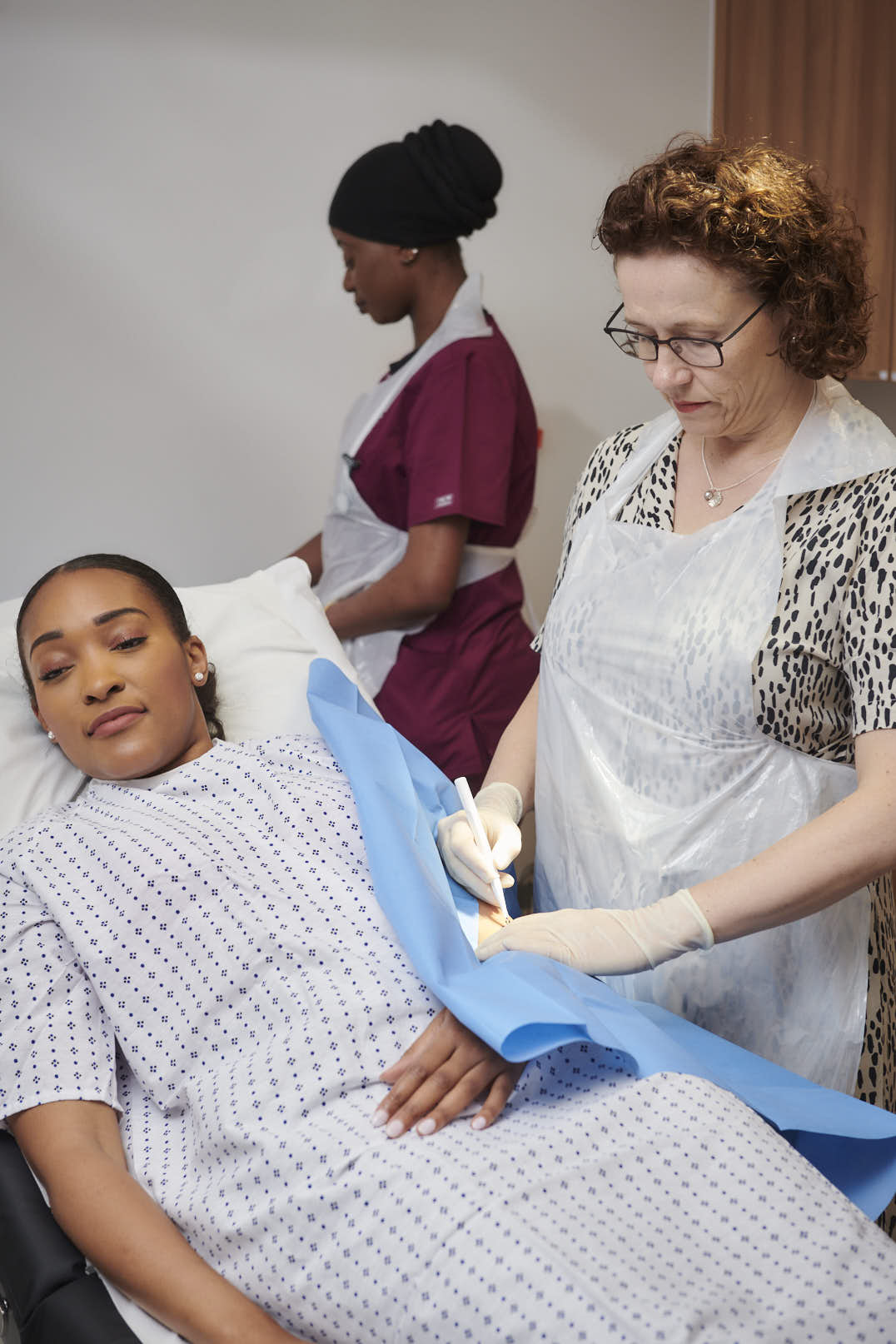Biopsy of skin
This involves taking a representative sample of your rash or skin lesion, but not aiming to remove it completely. The sample will then be sent for histological analysis (by looking down microscope) to help confirm the diagnosis. This procedure will usually leave you with a very small scar, sometimes even without stitches.
There are various types of biopsies:
Shave biopsy (partial removal of the lesion) and curettage (scraping the lesion) procedures are superficial biopsies of the skin leaving you with a ‘graze’. The wound will not require sutures and usually you can resume all normal activities and work immediately after (however please refrain from swimming and soaking in a bath for 1 week after the procedure).
Punch Biopsy (partial removal of the lesion) for diagnostic purposes. This involves taking a round piece of skin and applying sutures to bring the skin edges together. These will need to be removed in 5-7 days. You should avoid stretching the wound for at least 1 week to improve the appearance of the resultant straight line scar.
Excisional Surgery:
This involves taking the whole skin growth to remove it and, in most instances, curing it. Once removed you may have a straight line scar which should heal over 1-2 weeks.
Complex skin surgery
This involves taking the whole skin growth to remove it and, in most instances, curing it. Once removed you may either have a long straight line scar, or a scar that is not straight from a flap (moving skin next to the excision site to close the defect) or a graft (transplanting skin from one part of your body to another) with a scar around the moved skin and one from where it was taken.
Post-procedure FAQs
When will my sutures be removed?
This depends on the type of sutures that you have had. In general, sutures are removed at 5-14 days depending on the site and type of suture used. Please discuss this with your surgeon. We would be keen for you to have these removed at OneWelbeck so that we can also review the wound and ensure it is healing well.
When can I fly?
With local anaesthetic there are no restrictions to flying, but we would recommend waiting at least 1 week before flying in case of unforeseen issues. Although this advice will be different depending on your procedure and individual patient factors, please discuss this with your surgeon and travel insurance company before your procedure.
Can I eat or drink ?
With local anaesthetic procedures we encourage you to eat light meals before and after your procedure. Please keep yourself well hydrated and avoid any alcohol a day before and at least 2 days after your procedure as this will increase your bleeding tendency and delay healing.
Can I shower or bath?
We recommend having a wash prior to you attending for your procedure. Depending on where on your body the procedure is performed, we will sometimes ask you to avoid getting that area wet for 5-7 days. We will normally apply showerproof (but not waterproof) dressings to avoid the wound getting wet, when you are allowed to have a quick shower. In general, we do not recommend having baths when you have surgical wounds. Please discuss this with your surgeon.
I am having surgery on my face, do I have to take special precautions?
For procedures on the head we advise to avoid bending down after the procedure. This causes congestion and can lead to more swelling of your wound. On the day try to wear slip on shoes to avoid undoing shoelaces and bending down. We recommend avoiding heavy lifting and straining for at least a week after your procedure. Please try to get a week’s worth of shopping in order to avoid carrying heavy shopping bags.
My procedure is on my arm or leg, should I take any special precautions?
On the limbs – especially extremities such as the foot or hand, swelling following the procedure can develop. Therefore we would recommend elevation of the affected limb following the procedure when at home. In certain cases, such as with your hand we may put a sling on to keep your hand elevated. This may mean that you will need to reduce your responsibilities and exercises following your procedure, although your surgeon will warn you about these issues prior to your procedure.







